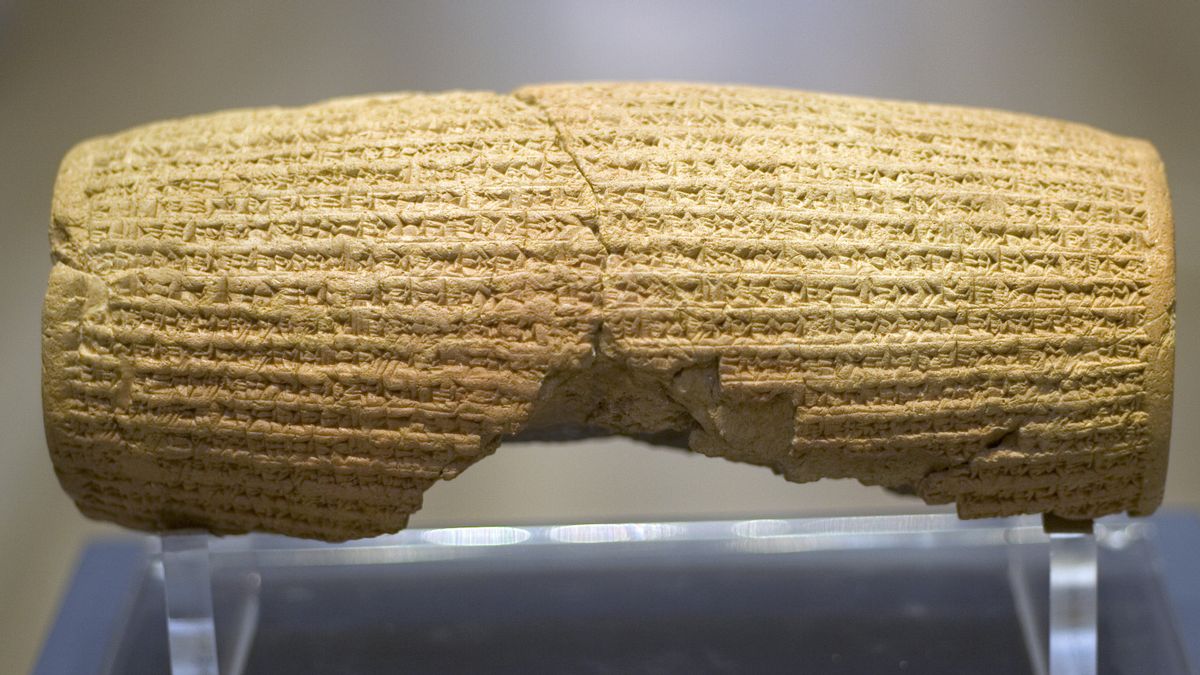JAKARTA - Human rights are rights that are owned by humans since they are born. Humans have the right to a decent life, freedom, safety and personal happiness. Unfortunately, not everyone is aware of this, so human rights need to be fought for.
Hence, today, 71 years ago, the General Council of the United Nations declared the Universal Declaration of Human Rights. The declaration contains the inviolability and revocation of rights by anyone regarding human rights.
The struggle for human rights was not pursued in a short time. As reported by voaindonesia.com Human rights have been fought for since the era of King Cyrus, or Koresh the Great of Persia, who ruled nearly 2,600 years ago.
The first Human Rights Declaration written by King Cyrus was inscribed on a clay cylinder inscribed with the ancient Babylonian letters, one of the oldest written languages. Now the object is known as a Cyrus Cylinder.
This cylinder was discovered during excavations by the British museum in 1879 in Babylon, which is now Iraqi territory. The cylinder measures 22.5 centimeters x 10 centimeters at its maximum diameter. This historical object was found in the form of fragments.
In the writings contained in Cyrus Cylinder, it is explained that King Cyrus succeeded in capturing the city of Babylon in 539 BC. This success at the same time brought progress in the civilization of human life. It frees its citizens to embrace any religion they want.
Meanwhile, in this note, Cyrus also freed the imprisoned Jews and allowed them to return to Jerusalem. For thousands of years, Cyrus has been a hero to the Jewish people.
Most importantly, the cylinder also tells of how Cyrus conquered Babylon peacefully, not burning or destroying it, as was common practice at the time. He also allowed the native Babylonians to live as usual, in peace.
"He declared that slaves would be freed, people had the right to choose their own religion, and that every human race living in cities would be treated equally," said British diplomat Greg Dorey quoted from blogs.fco.gov.uk .
The ideas embodied in the Cyrus Cylinder later inspired other declarations of individual rights such as the Magna Carta (1215), the Petition for Rights (1628), the US Constitution (1787), the French Declaration on the Rights of Humans and Citizens (1789). , and US Bill of Right (1791).
In addition, citing tirto.id, the Cyrus Cylinder idea is also parallel with the first four articles of the Universal Declaration of Human Rights. The first four articles are the right to life, liberty and security of the body, recognition of personality, and obtaining the same recognition as other people according to law and obtaining legal guarantees in criminal cases.
The English, Chinese, Japanese, Arabic, and French versions are automatically generated by the AI. So there may still be inaccuracies in translating, please always see Indonesian as our main language. (system supported by DigitalSiber.id)











